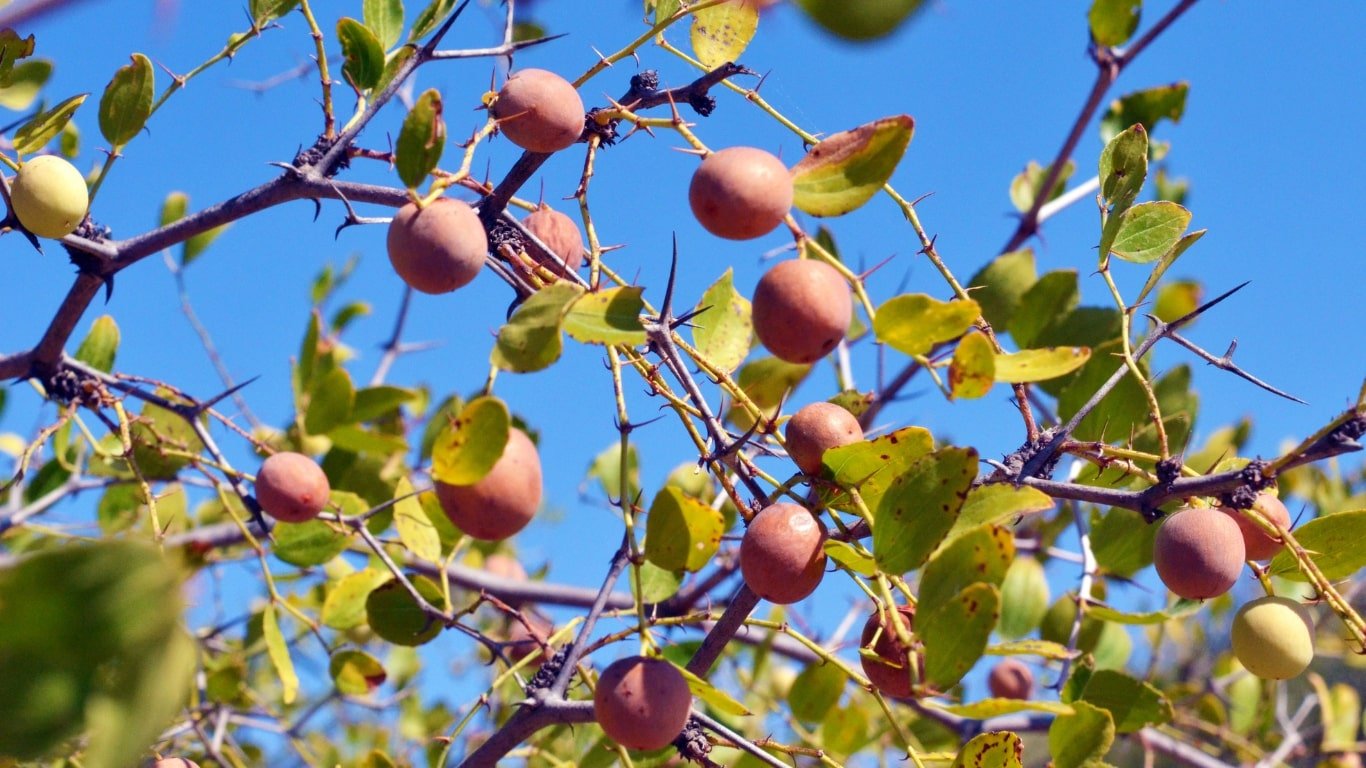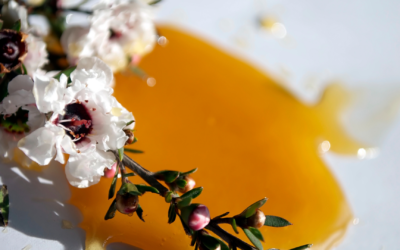
Introduction
Sidr honey, often hailed as the “liquid gold” of the honey world, is a rare and luxurious type of honey produced by bees that primarily feed on the nectar of the Sidr tree (Ziziphus spina-christi). Known for its exceptional taste, rich nutritional profile, and myriad health benefits, Sidr honey has been treasured for centuries in various cultures, particularly in the Middle East. In this article, we will delve into the origins, production, unique characteristics, health benefits, and cultural significance of Sidr honey.
Origins and Production of Sidr Honey
Sidr honey is predominantly produced in the arid regions of Yemen, although it can also be found in parts of Saudi Arabia, Oman, and Pakistan. Yemen, however, is most famous for producing the finest and most authentic Sidr honey, particularly from the Hadramawt region, where the Sidr trees grow in abundance.
The Sidr tree, also known as the Jujube tree, is a resilient species that thrives in harsh climates, particularly in the mountainous and desert regions of the Arabian Peninsula. These trees are deeply rooted in the culture and history of the region, often symbolizing strength and resilience. The bees that produce Sidr honey primarily feed on the blossoms of these trees, which bloom twice a year, resulting in two main harvests: one in the spring and another in the fall.
The process of harvesting Sidr honey is meticulous and labor-intensive, often carried out by skilled beekeepers using traditional methods passed down through generations. The honey is extracted using minimal intervention to preserve its purity and natural properties. It is typically harvested in the early morning hours when the bees are less active, ensuring the honey is collected without disturbing the bees or compromising the quality of the honey. After extraction, the honey is usually left in its raw form, unheated, unpasteurized, and unfiltered, which preserves its rich flavor and nutrient content.
Unique Characteristics of Sidr Honey
Sidr honey is distinguished by its deep, amber color, which can vary depending on the region and the time of harvest. The honey has a thick, syrupy consistency and a complex flavor profile that is both sweet and slightly tangy, with hints of caramel and butterscotch. Unlike many other types of honey, Sidr honey has a low glycemic index, making it a preferred choice for those managing blood sugar levels.
One of the most remarkable features of Sidr honey is its rich nutritional profile. It is packed with vitamins, minerals, amino acids, and antioxidants, making it a potent natural remedy for various health conditions. Sidr honey contains high levels of potassium, calcium, magnesium, and iron, as well as vitamins B1, B2, B6, and C. These nutrients contribute to its numerous health benefits, which have been recognized and utilized in traditional medicine for centuries.
Health Benefits of Sidr Honey
Sidr honey has long been revered for its therapeutic properties, earning it a place of honor in traditional medicine, particularly in Ayurvedic and Unani practices. Modern scientific research has also begun to uncover the myriad health benefits associated with Sidr honey, further cementing its reputation as a superfood. Here are some of the most notable health benefits:
- Antibacterial and Antiviral Properties: Sidr honey is renowned for its potent antibacterial and antiviral properties. It contains hydrogen peroxide and methylglyoxal, two compounds that are known to inhibit the growth of harmful bacteria and viruses. This makes Sidr honey an effective natural remedy for treating wounds, infections, and sore throats. In some cultures, it is even used as a natural antibiotic to treat respiratory infections and gastrointestinal disorders.
- Boosts Immune System: The high antioxidant content in Sidr honey, including flavonoids and phenolic acids, helps strengthen the immune system by neutralizing free radicals that can damage cells. Regular consumption of Sidr honey is believed to enhance the body’s natural defenses, making it more resilient to illnesses and infections.
- Digestive Health: Sidr honey is a natural prebiotic, which means it promotes the growth of beneficial bacteria in the gut. This can help improve digestion, alleviate symptoms of irritable bowel syndrome (IBS), and prevent gastrointestinal infections. Additionally, the anti-inflammatory properties of Sidr honey can soothe the digestive tract and reduce symptoms of gastritis and acid reflux.
- Wound Healing and Skin Health: Sidr honey’s antibacterial and anti-inflammatory properties make it an excellent natural remedy for wound healing. It has been used for centuries to treat burns, cuts, and other skin injuries. When applied topically, Sidr honey creates a protective barrier over the wound, preventing infection and promoting faster healing. It is also used in skincare products to treat acne, moisturize the skin, and reduce the appearance of scars.
- Energy and Stamina: Sidr honey is a natural source of energy due to its high carbohydrate content, primarily in the form of natural sugars like glucose and fructose. These sugars are easily absorbed by the body, providing a quick and sustained energy boost. Athletes and those engaged in physical activities often consume Sidr honey to enhance stamina and performance.
- Cardiovascular Health: The antioxidants in Sidr honey also play a role in promoting heart health by reducing oxidative stress and lowering blood pressure. Regular consumption of Sidr honey has been linked to improved cholesterol levels, reduced risk of atherosclerosis, and better overall cardiovascular function.
Cultural Significance and Uses

Sidr honey holds a special place in the cultural and religious traditions of the Middle East. In Islamic tradition, honey is highly regarded for its healing properties, as mentioned in the Quran: “And your Lord inspired the bee, saying: ‘Take your habitations in the mountains and in the trees and in what they build. Then eat from all the fruits and follow the ways of your Lord made easy.’ There emerges from their bellies a drink, varying in colors, in which there is healing for people” (Quran 16:68-69).
Because of its exceptional quality and rarity, Sidr honey is often reserved for special occasions, such as weddings, religious ceremonies, and as gifts for honored guests. It is also used in various culinary applications, including as a sweetener for traditional desserts, a drizzle over fruits, or mixed into beverages like tea and coffee.
Frequently Asked Questions
What is so special about Sidr honey?
Sidr honey is renowned for its rich flavor, deep amber color, and potent health benefits, which are attributed to the nectar of the Sidr tree (Ziziphus spina-christi). This rare honey is packed with essential vitamins, minerals, and antioxidants, making it a powerful natural remedy for various health conditions. Its antibacterial, antiviral, and anti-inflammatory properties, along with its luxurious taste, distinguish Sidr honey as one of the most sought-after types of honey in the world.
Why is Sidr honey so expensive?
Sidr honey commands a high price due to its rarity, labor-intensive production process, and the unique environment in which it is harvested. The Sidr trees from which the honey is derived grow in remote, arid regions, particularly in Yemen, where traditional beekeeping methods are used to ensure the purity and quality of the honey. Limited harvests, combined with the high demand for this luxurious product, contribute to its elevated cost in the global market.
Which is better, Manuka honey or Sidr honey?
Both Manuka honey and Sidr honey are exceptional in their own right, each with unique properties and health benefits. Manuka honey, primarily produced in New Zealand, is celebrated for its high concentration of methylglyoxal (MGO), which gives it strong antibacterial properties, making it highly effective for wound healing and treating infections. Sidr honey, on the other hand, is prized for its rich flavor, lower glycemic index, and wide range of medicinal uses, particularly in traditional medicine. The choice between the two often comes down to personal preference and specific health needs.
Is Sidr honey mentioned in the Quran?
While Sidr honey itself is not specifically mentioned in the Quran, honey in general is highly regarded in Islamic tradition for its healing properties. The Quran references honey in Surah An-Nahl (16:68-69), where it is described as a substance with healing qualities, emerging from the bellies of bees. The Sidr tree, however, is mentioned in Islamic texts, and the honey produced from it is often considered particularly special due to its association with the revered tree.
Conclusion
Sidr honey is more than just a sweet treat; it is a natural elixir that has been cherished for its healing properties, rich flavor, and cultural significance for centuries. Its unique characteristics, from its complex flavor profile to its potent health benefits, make it a highly sought-after product in the global market. Whether used as a natural remedy, a culinary delight, or a symbol of hospitality and tradition, Sidr honey continues to captivate those who seek the very best that nature has to offer.



